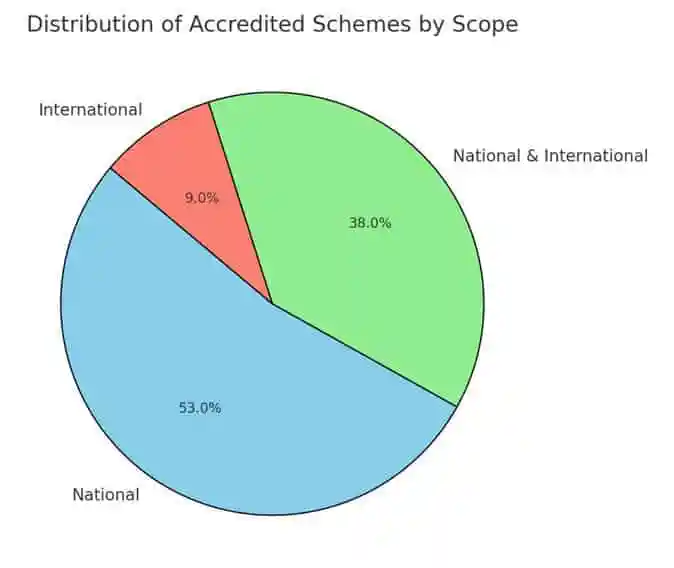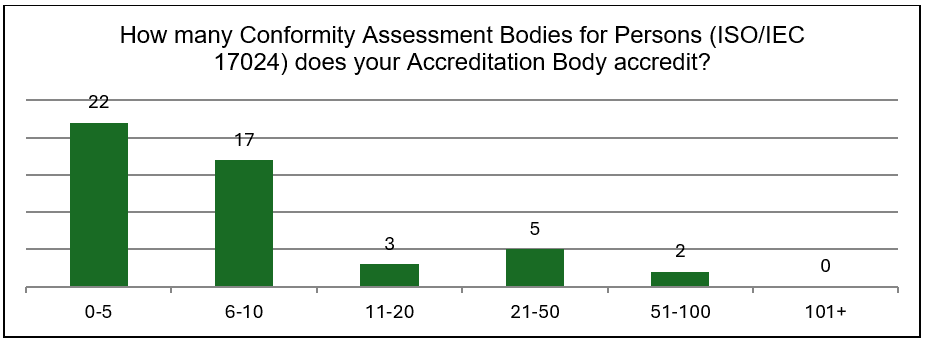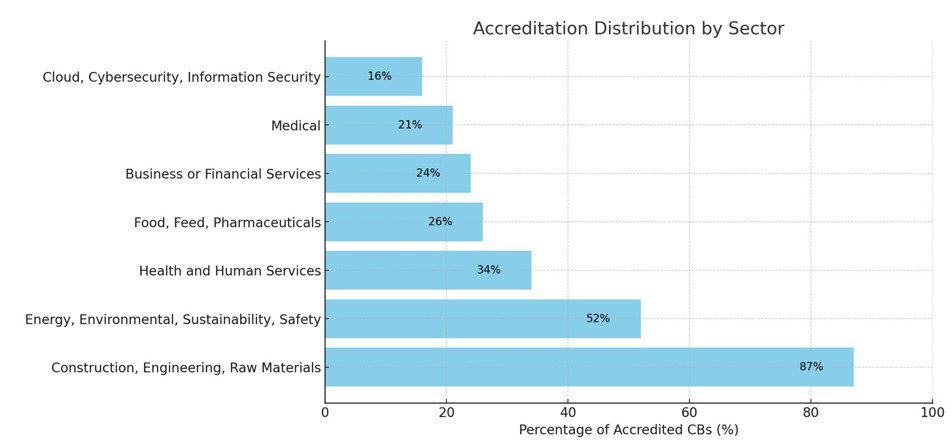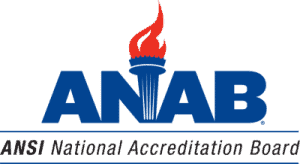Global Trends in the Certification of Persons: Insights from Survey of 49 Accreditation Bodies

Introduction
Since its first publication in 2003, the ISO/IEC 17024 standard, Conformity assessment — General requirements for bodies operating certification of persons, has become the global benchmark in defining the competence requirements for bodies operating certification of persons. The standard outlines requirements for independence, impartiality, and scheme development, and it requires evidence for the claim that examinations are fair, valid, and reliable. This helps to assure the public and employers that a certified individual has demonstrated that they possess the required competence to practice. Furthermore, the standard helps maintain consistency and credibility in certification processes across various industries, enhancing public trust and improving workforce quality globally.
To better understand global trends in this area, the International Accreditation Forum (IAF) conducted a survey in 2024. This paper presents findings from 49 accreditation bodies worldwide, focusing on the implementation of ISO/IEC 17024.
Methodology
In April 2024, the IAF launched a global survey targeting accreditation bodies (ABs) involved in the certification of persons. A total of 49 ABs from various regions responded to the survey. The findings presented here reflect the experiences and practices of these ABs in implementing ISO/IEC 17024.
Findings
Analysis of the responses reveals that 80% of the ABs have accredited 10 or fewer certification bodies (CBs) under ISO/IEC 17024. Only two ABs accredit between 50 to 100 CBs, with ANAB having the highest number at 90 CBs.

Industry Sectors:
The following chart depicts the sectors represented by the accredited certification bodies.

Accreditation Trends Among Accreditation Bodies:
- Regulated Schemes:
- 57% of ABs accredit regulated schemes.
- 37% do not accredit regulated schemes.
- ISO-based Schemes:
- 54% of ABs accredit schemes based on ISO standards.
- 46% do not accredit schemes based on ISO standards.
Ownership of Accredited Certification Schemes:
- CB Ownership:
- 88% of accredited schemes are owned by the CBs themselves.
- External Ownership:
- 56% of accredited schemes are owned by external scheme owners.
- Governmental Ownership:
- 34% of accredited schemes are owned by governmental agencies.
The following pie chart represents the distribution of accreditation schemes as national, international or both.

The top three challenges identified by the surveyed ABs are:
- A shortage of qualified assessors and technical experts.
- Difficulties in evaluating schemes under Clause 8 of ISO/IEC 17024.
- Limited demand and slow growth in the adoption of voluntary certifications.
Discussion
The dominance of sectors such as construction, engineering, and safety suggests that certification in high-risk industries remains a priority. A noteworthy finding was a significant number of accredited CBs in Energy, Environment, or Sustainability.
It is also encouraging to see a sizable demand for certifications in food, health, medical services, and cybersecurity. At the same time, the shortage of competent assessors and technical experts and demand for voluntary certifications underscores the need to address these two critical areas. It also highlights the need for further awareness and promotion of the benefits of accredited certification to both employers and employees.
Conclusion and Implications
The findings from this survey suggest that ISO/IEC 17024 is playing a crucial role in globalizing personnel certification by providing a standardized framework that ensures consistency and reliability across different countries. As a result, numerous nations have adopted accreditation programs based on this standard, fostering international recognition and mobility for certified professionals worldwide.
At the same time, the shortage of competent assessors and technical experts poses a significant challenge to the effective implementation of accreditation programs, hindering the growth and quality of certifications. Additionally, the lack of demand for voluntary certifications slows progress, highlighting the need for greater awareness and investment in these areas to assure their continued relevance and success.
In conclusion, the global landscape for personnel certification under ISO/IEC 17024 is diverse, rapidly growing, and spans multiple sectors, both national and international, with significant potential to enhance workforce quality and elevate human capital.
Note: The author would like to express deep appreciation to IAF for initiating this survey and to Dr. Cynthia Woodley for her efforts in its deployment and analysis.






